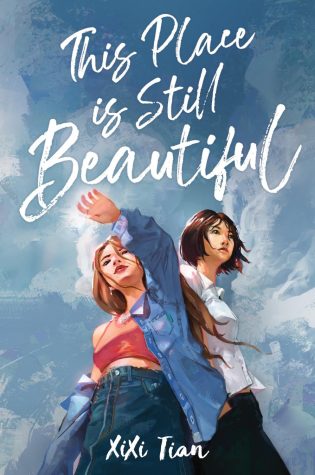Recent Reads: A&E Writers’ Recommendations
Books that have caught Mitty students’ interest lately and what is worth the read
Where the Crawdads Sing: A Comparison Between Book and Movie

Where the Crawdads Sing by Delia Owens tells the story of Kya Clark, a girl abandoned by her family at the age of eleven to fend for herself in a shack deep in the North Carolina marsh. When her only friend goes off to college, Kya turns her affection to a boy named Chase, but four years later when he turns up dead, all eyes turn to Kya. Did she really push him off the top of the fire tower as the people of the nearby town suspect, or did he fall to his death of his own accord?
After taking my own notes on both the book and movie, I was glad to see that there are very few major discrepancies compared to some other notable adaptations (I’m looking at you Percy Jackson). It was definitely pleasantly surprising to see how much the movie did get right as far as emotional value, imagery, and, of course, the plot itself.

It is hard to believe that the movie adaptation could live up to the vivid imagery of nature that is conjured across the pages of the novel, but the cinematography did not disappoint. The displays of the natural beauty of the marsh shown at intervals throughout the movie could easily be mistaken for a wildlife documentary. With sweeping aerial shots of the foliage and close-ups of its animal inhabitants, a spectacular effect is created that shows just how isolated the area is. Even in the 20th century, the vast expanse of the marsh appears completely void of human influence.
The book switches between Kya’s life growing up in the marsh—starting in 1952—and her present life when she is arrested and put on trial in 1970. This timeline consistently provides the reader with a bit of suspense as they try to connect the dots of Kya’s life and Chase’s death. Similarly, the movie provides Kya’s past in the form of flashbacks as she sits in her jail cell and later in the courtroom. However, the movie is a bit confusing to anyone who has first read the book as it tends to scramble some scenes around in the timeline, making certain character interactions seem odd or uncalled for. Despite this, both the book and the movie do an adequate job of artistically filling in the gaps of what led Kya to the present moment.
Overall, the only disparity between the book and movie that is problematic is the movie’s failure to mention Kya’s poetry. Throughout the book, Kya is seen reciting and creating poetry detailing her emotions and surroundings, usually about the connection she feels to the wildlife around her. However, it’s never referenced in the movie. While this isn’t necessarily a dealbreaker on its own, it changes the entire ending scene and—at least for me—makes it less shocking and dramatic than it had the potential to be.
Here’s the bottom line: if you have time to read the book, read it! This may just be the bookworm in me talking, but it truly is impossible to put down as you become invested in the life and story of Kya Clark. Nevertheless, if you only have two hours to spare, the movie—now on Prime Video and YouTube—is still an admirable alternative.
—Emma Brown
This Place Is Still Beautiful: The Tale Of Two Sisters In a Small Town
XiXi Tian’s debut novel This Place is Still Beautiful tells the powerful narrative of the Flanagan sisters and their respective individual growth over one summer. Told in dual perspectives, the story centers around NYU student Margaret and her younger sister Annalie—two biracial siblings raised in an Illinois small town by their single Chinese mother. When a racial slur is spray-painted on their house, Margaret is forced to return to the hometown she eagerly left behind, while Annalie must reconcile with the fact that someone in her beloved town wrote this hateful message.
 The star of the show is undoubtedly the complex relationship between Annalie and Margaret, as the two of them are practically polar opposites. Tian’s ability to paint such an honest portrait of what their estranged relationship looks like sets this novel apart from its contemporaries. At the beginning of the novel, Margaret and Annalie are hardly on speaking terms, the distance between them only widening the existing rift in their relationship. Their resentment for one another is clear: Margaret is jealous of Annalie—the “sweeter one” in contrast to Margaret’s standoffishness.
The star of the show is undoubtedly the complex relationship between Annalie and Margaret, as the two of them are practically polar opposites. Tian’s ability to paint such an honest portrait of what their estranged relationship looks like sets this novel apart from its contemporaries. At the beginning of the novel, Margaret and Annalie are hardly on speaking terms, the distance between them only widening the existing rift in their relationship. Their resentment for one another is clear: Margaret is jealous of Annalie—the “sweeter one” in contrast to Margaret’s standoffishness.
While Annalie is white-passing, Margaret’s Asian features attract negative attention. Margaret’s desire for justice rubs Annalie the wrong way, who disassociates herself from Margaret’s activism to fit in with her white peers. Admirably, Tian doesn’t shy away from showing that the frostiness between the sisters persists throughout the novel; both avoid each other in order to prevent the inevitable conflict.
Annalie and Margaret have been scarred by their experiences, so they build up walls to protect themselves from others, but also each other. As these walls break down, they realize that they do have a bond—a shared desire to take care of their mother. Despite their differences, neither of them are truly in the wrong. There is one key message: nothing is ever black and white when it comes to showing love. Though they eventually reconcile, they aren’t automatic besties. We appreciated the distinct awkwardness between them as they navigate this new territory. Most importantly, this layer of realism by the author lets readers know that even if everything isn’t all sunshine and rainbows, it doesn’t mean it’s necessarily all bad.
Tian’s portrayal of racism through the novel offers a necessary, yet dishearteningly realistic view on how racist crimes are approached. Their community views it as tragic and disgusting but hesitates to name it as racially-motivated. When Margaret attempts to publicize this as a hate crime and pursue justice, people accuse her of being overdramatic and brush it off. The mention of race seems to provoke uncomfortable feelings. After all, no one wants to confront racism in their own community. The veiled racism extends to white-passing Annalie, as people seem to think that because of her appearance she would feel less upset about the crime. Growing up, Annalie could never feel “Asian-enough,” being labeled as such by her peers. By educating readers on the many nuanced forms of racism, Tian proves the importance of novels like hers in the modern day.
This Place is Still Beautiful cements its place as a timely novel, full of messy feelings between family, the strings of one’s hometown, and strength in the face of racism. With its commentary on contemporary issues such as AAPI hate and a multitude of thought-provoking themes, Tian’s novel mirrors many aspects of society today, making it the quintessential read.
—Bianca Sutioso and Faith Borrello

